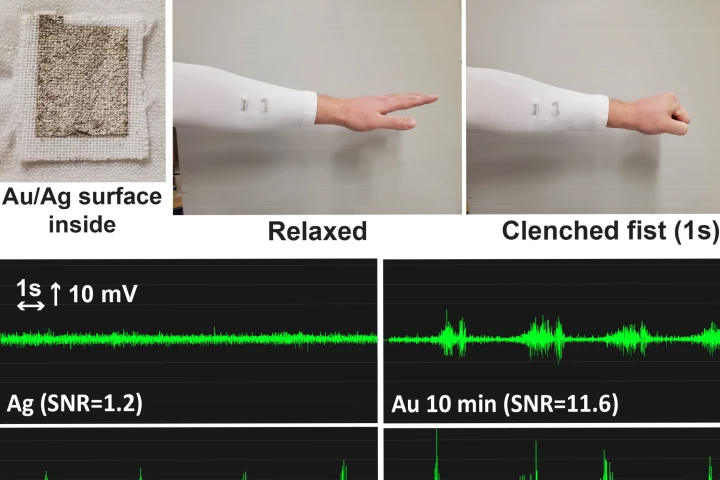Silver Ink
-
Cranking up the air conditioner keeps buildings cool, but it guzzles energy. Passive materials can regulate temperatures more efficiently, and now scientists have developed a new coating that keeps glass much cooler, while still being transparent.
-
Perovskites are one of the most promising new materials for solar cell technology. Now engineers at the University of Rochester have developed a way to more than triple the material’s efficiency by adding a layer of reflective silver underneath it.
-
For some time now, it's been known that the application of electricity can help heal wounds. The experimental new ePatch bandage takes that approach, plus it boosts the healing process by killing bacteria.
-
Red wine and chocolate are notorious for staining clothes, thanks to the tannic acid that they contain. Scientists at the University of Tokyo have now used that acid in a textile coating which keeps clothes from stinking, and that doesn't wash out.
-
Although silver is highly effective at killing bacteria, it can also be toxic to humans in large amounts. That's where a new wound dressing is intended to come in, as it only releases its silver payload when infections are present.
-
Currently, if you wish to track the electrical activity of someone's muscles, you have stick electrodes onto their skin. An experimental new technology, however, simply utilizes conductive fabric that's incorporated into washable pieces of clothing.
-
E-waste is a major environmental hazard, full of valuable metals. Engineers at Rice University have now shown that precious metals and rare earth minerals can be recovered by flash-heating ground-up electronics with a zap of electricity.
-
Researchers at Brown University have developed a new way to make super-hard metals, up to four times harder than usual. The team made nanoparticle “building blocks” that could be fused together under pressure, thanks to a chemical treatment.
-
When a patient receives a titanium artificial hip, there's always the risk of an infection developing at the interface between the metal and the bone. A new implant-coating process, however, is intended to greatly reduce that risk.
-
The colorful glaze on that ceramic mug of yours may look nice, but there's a chance that it could contain toxic substances. US scientists have thus created a safer type of glaze, that incorporates tiny particles of silver and gold.
-
Researchers have taken advantage of defects to make silver much stronger while still being conductive – breaking a theoretical limit in the process.
-
The Voxel8, a US$9,000 3D printer presented at this year's CES, could make it surprisingly easy to blend plastics and electronics in the same object and lead 3D printing to a new level of sophistication.
Load More











